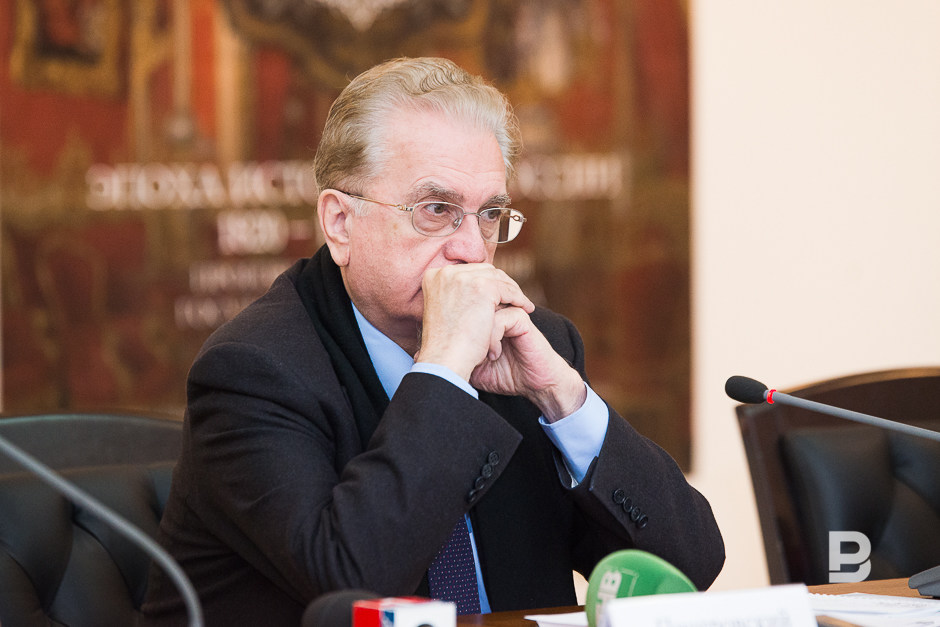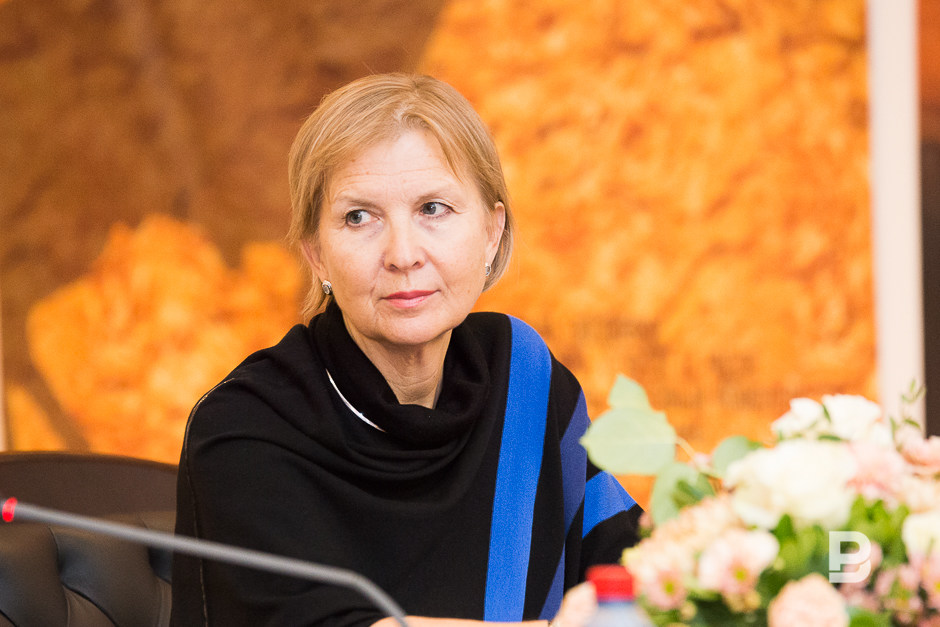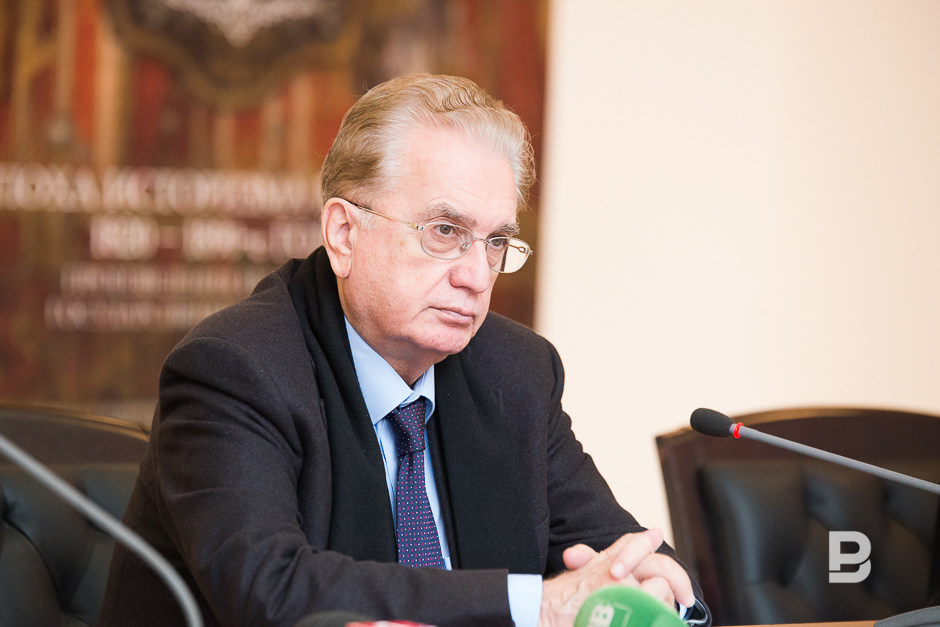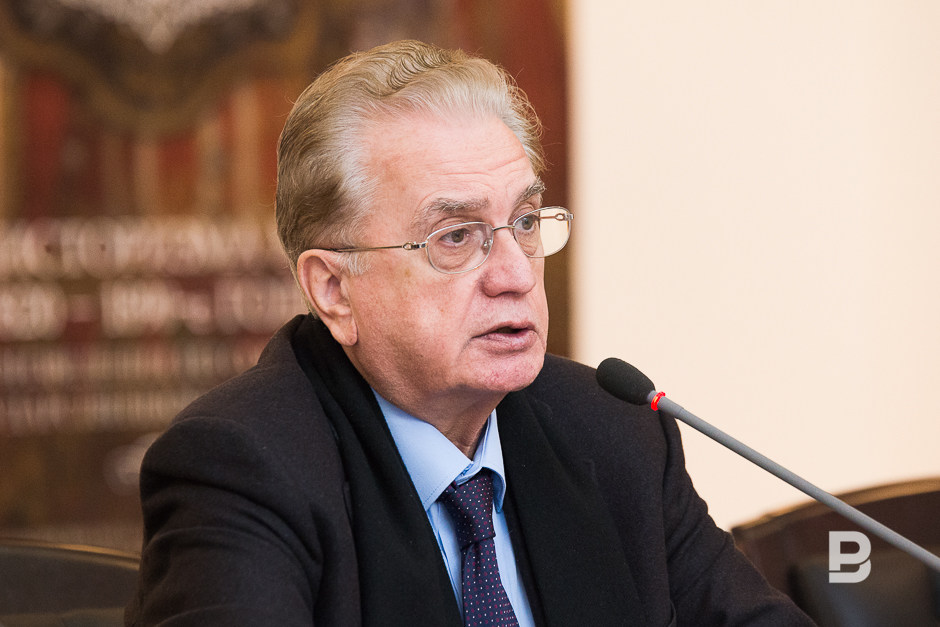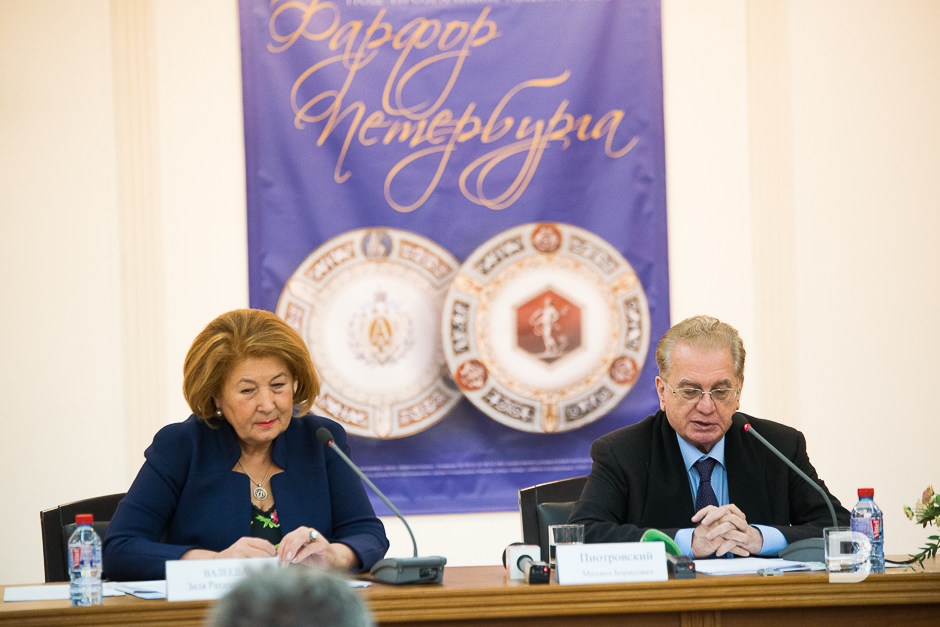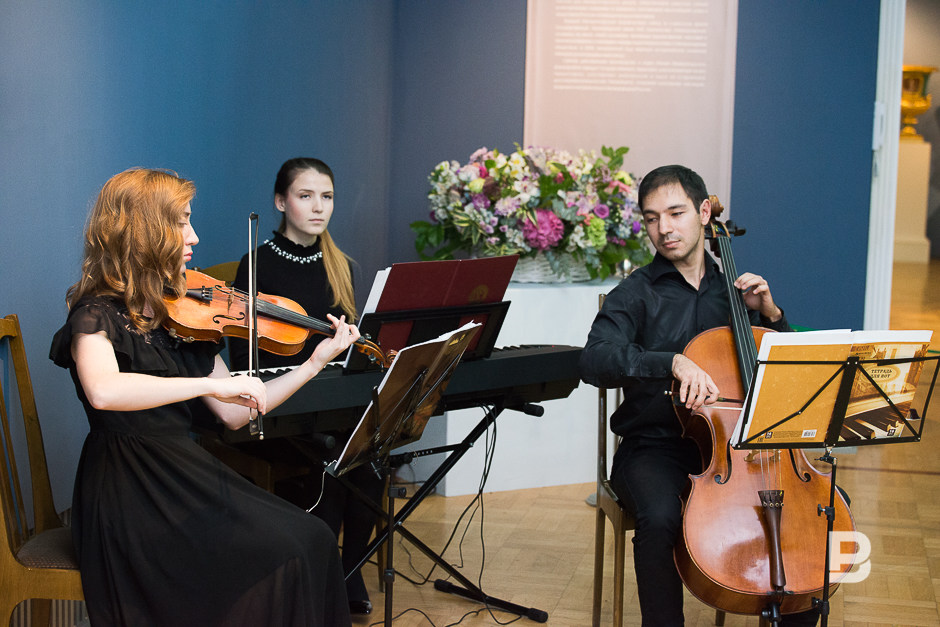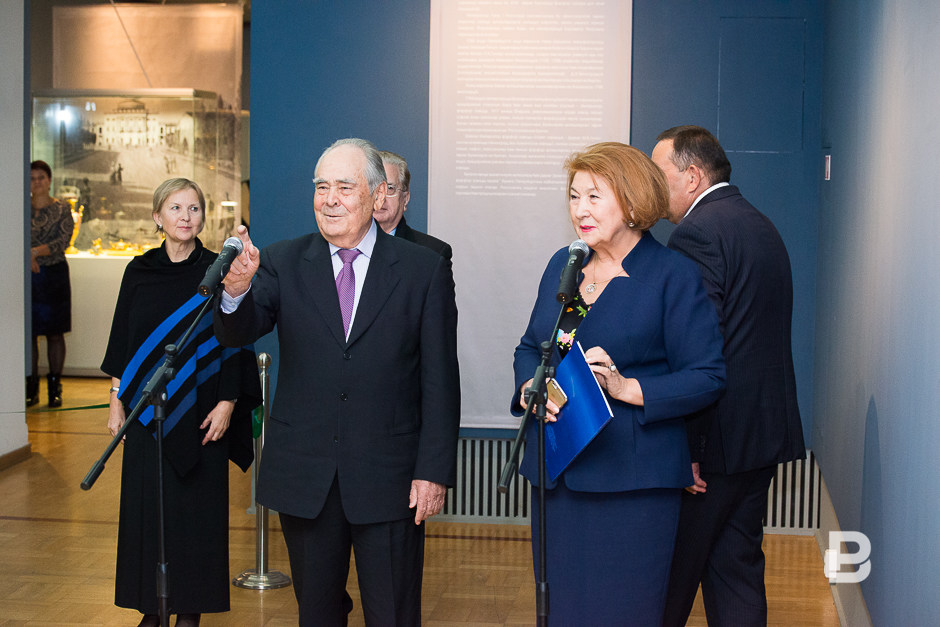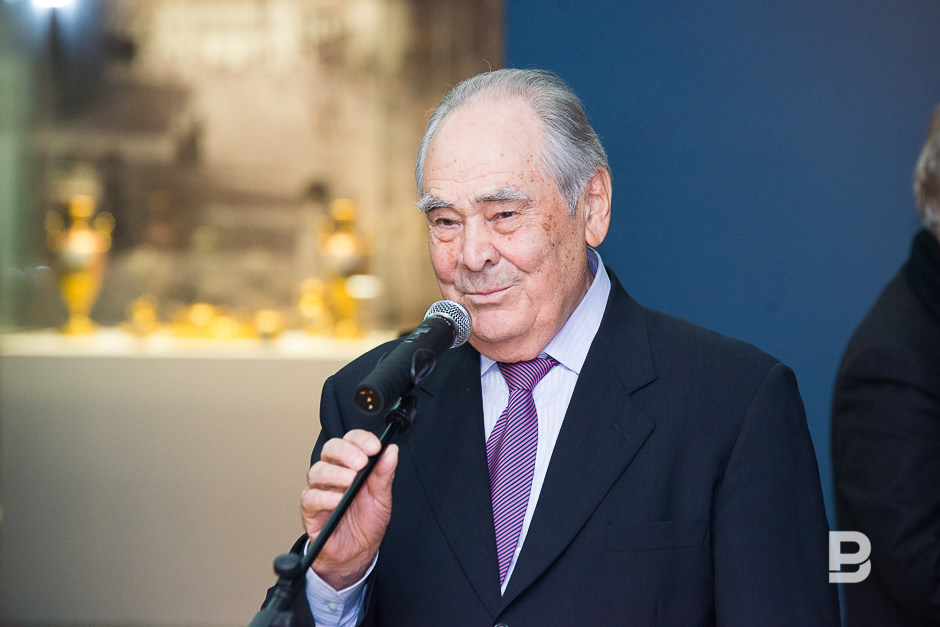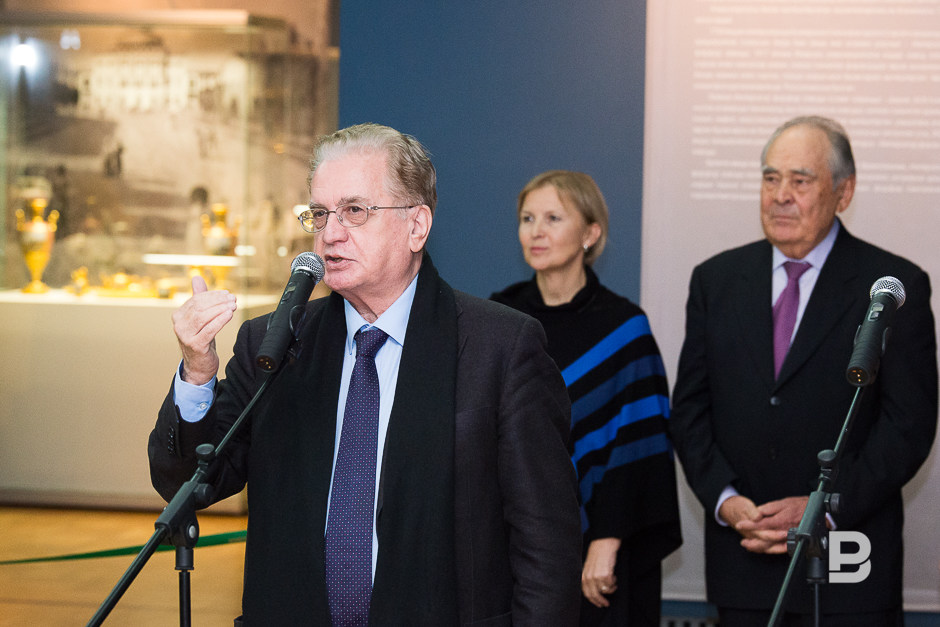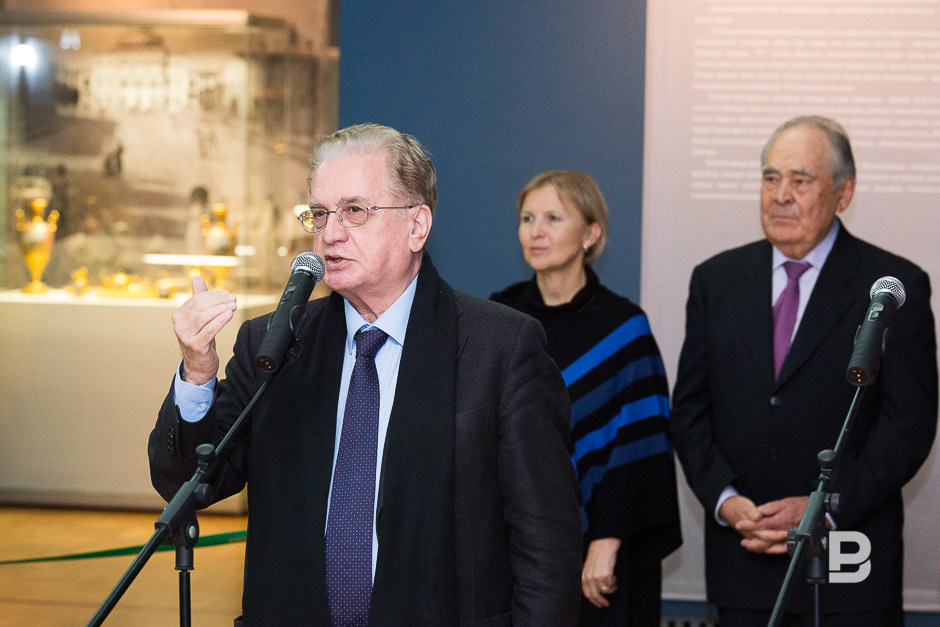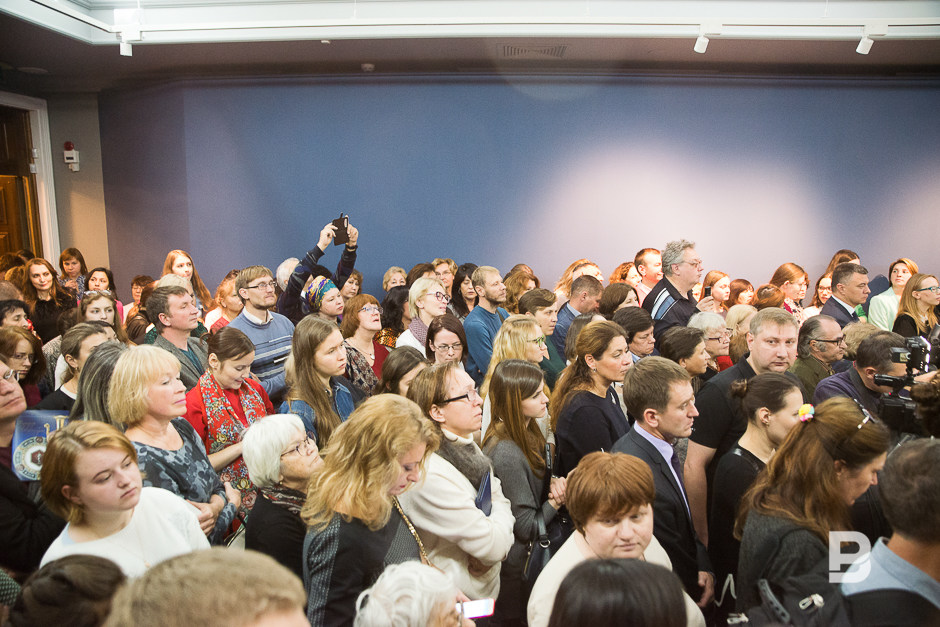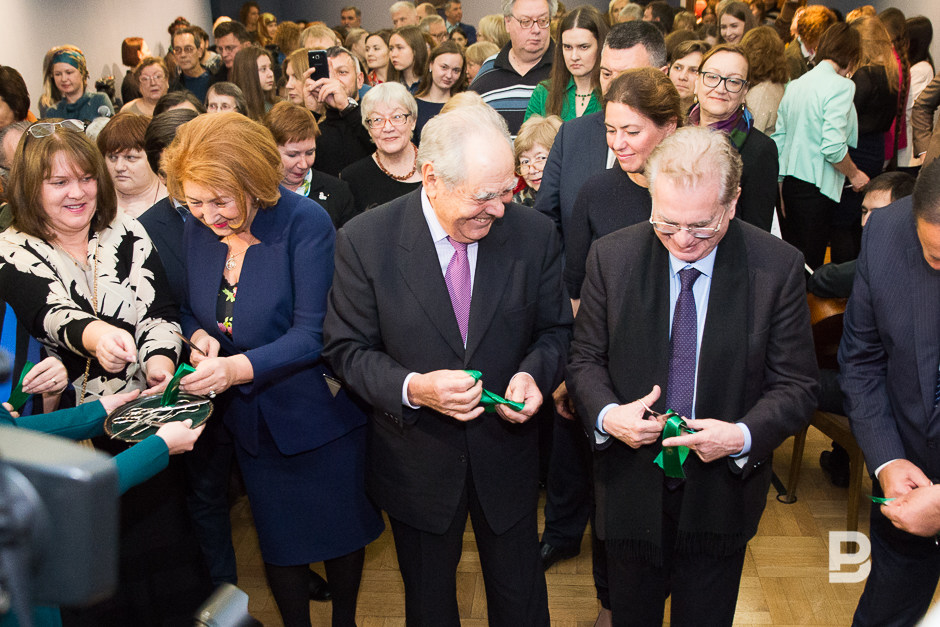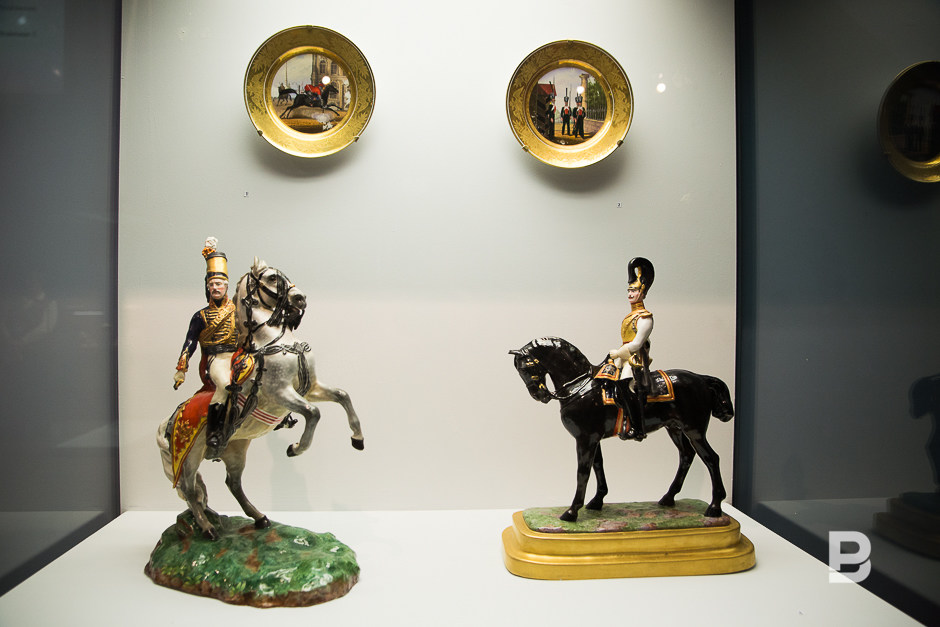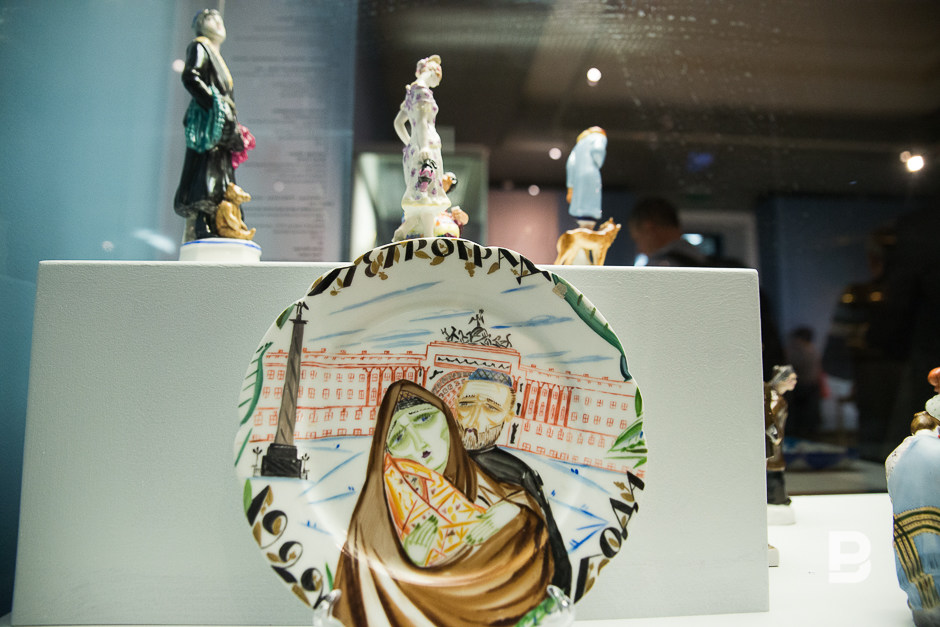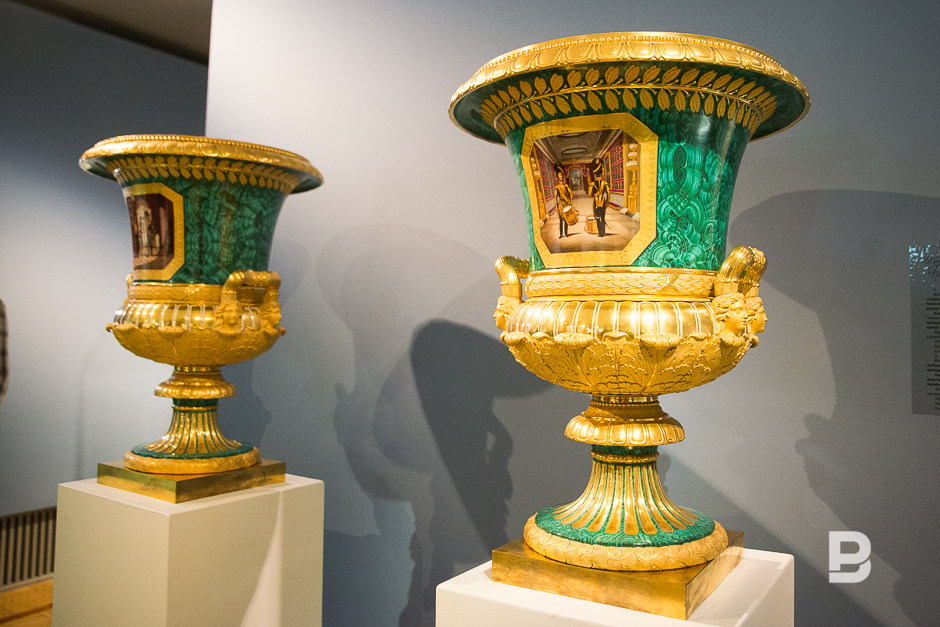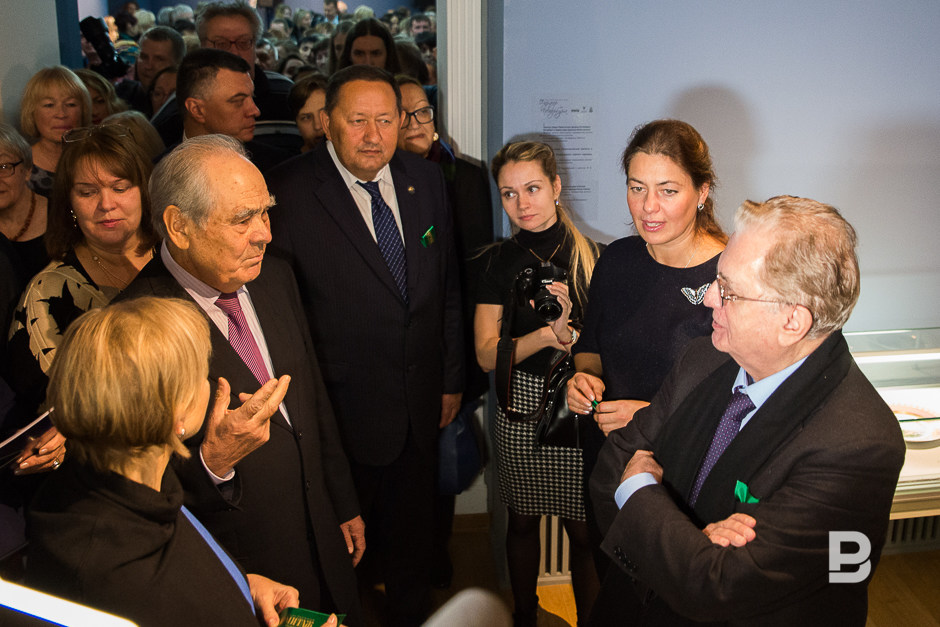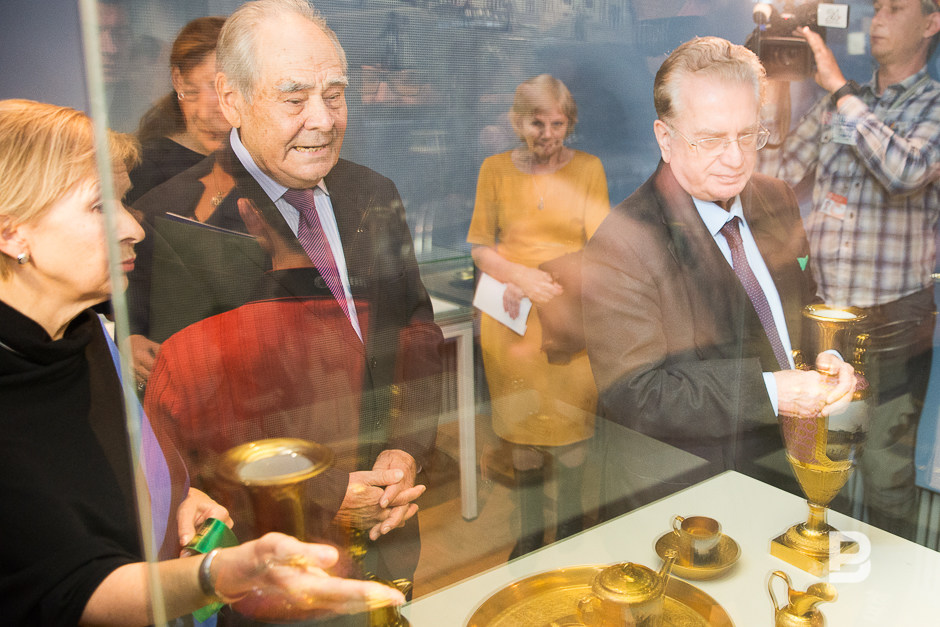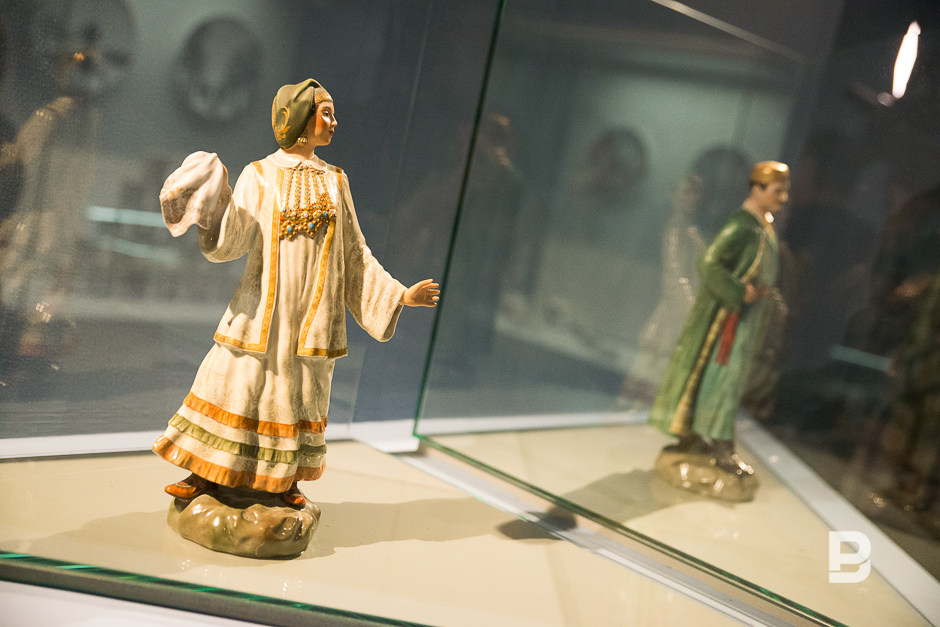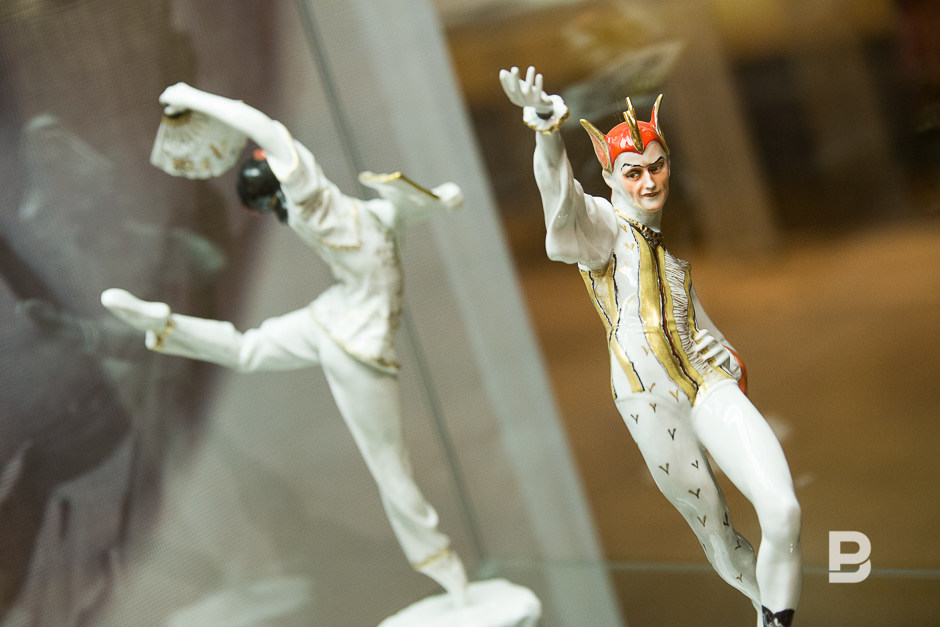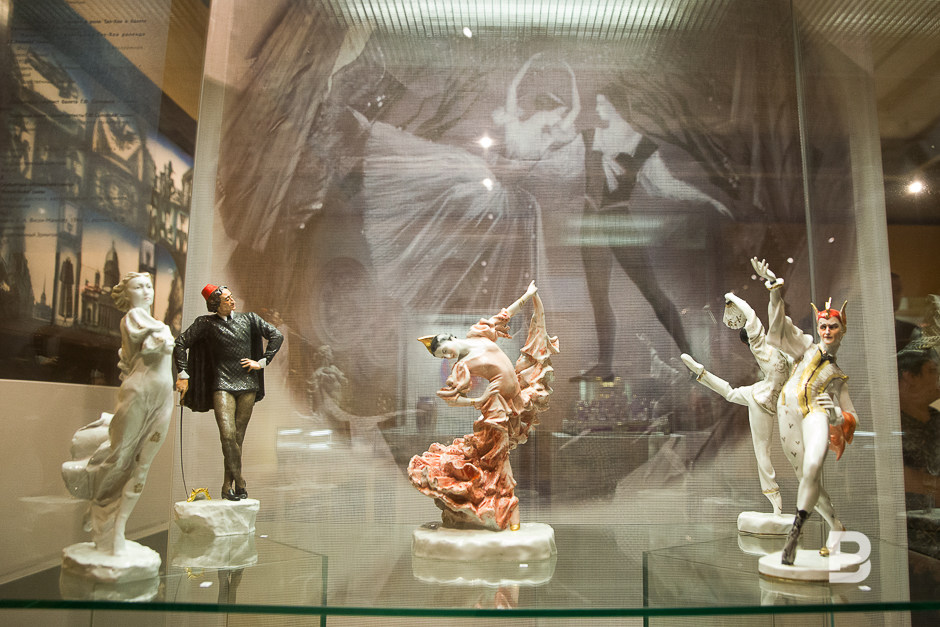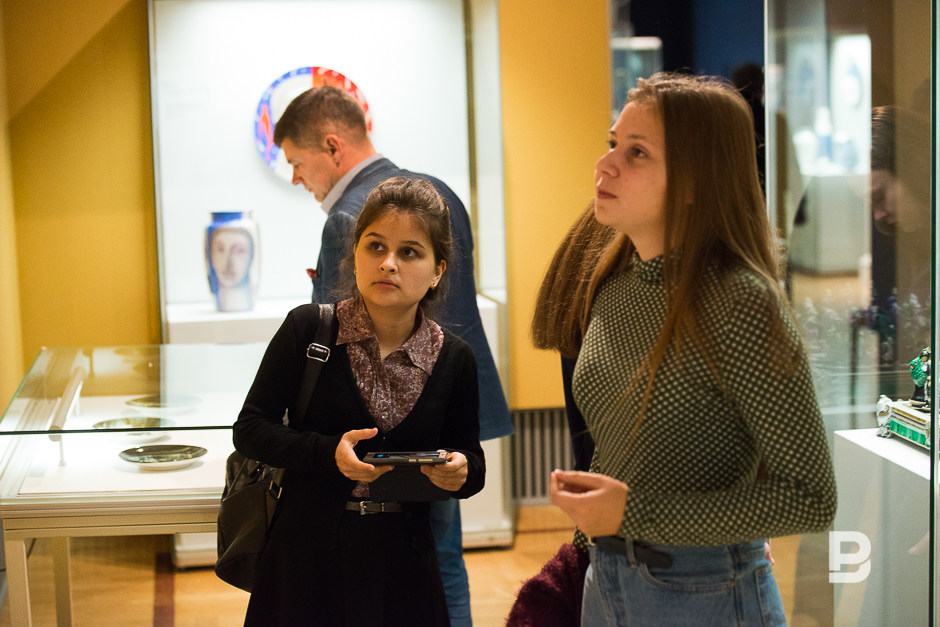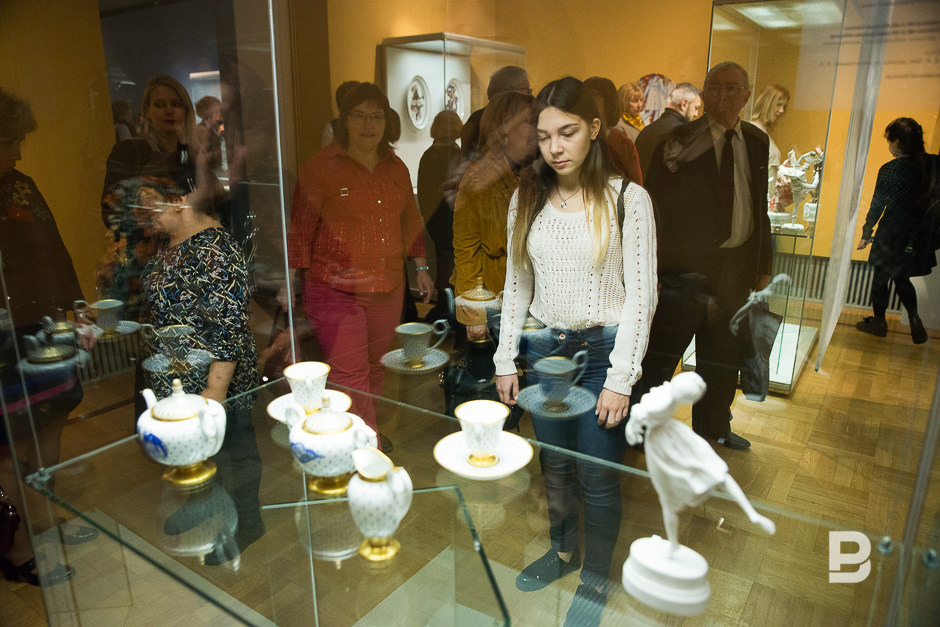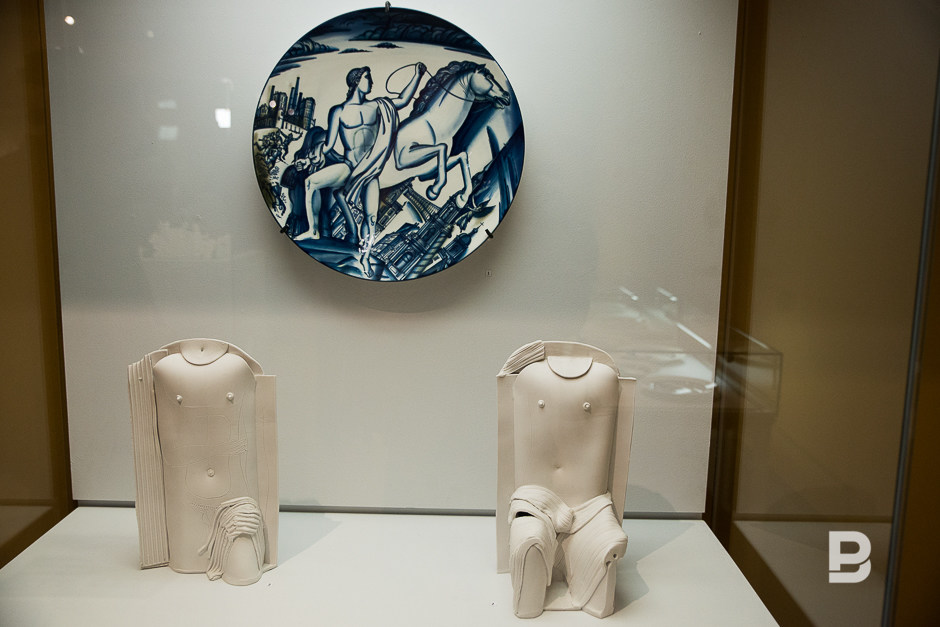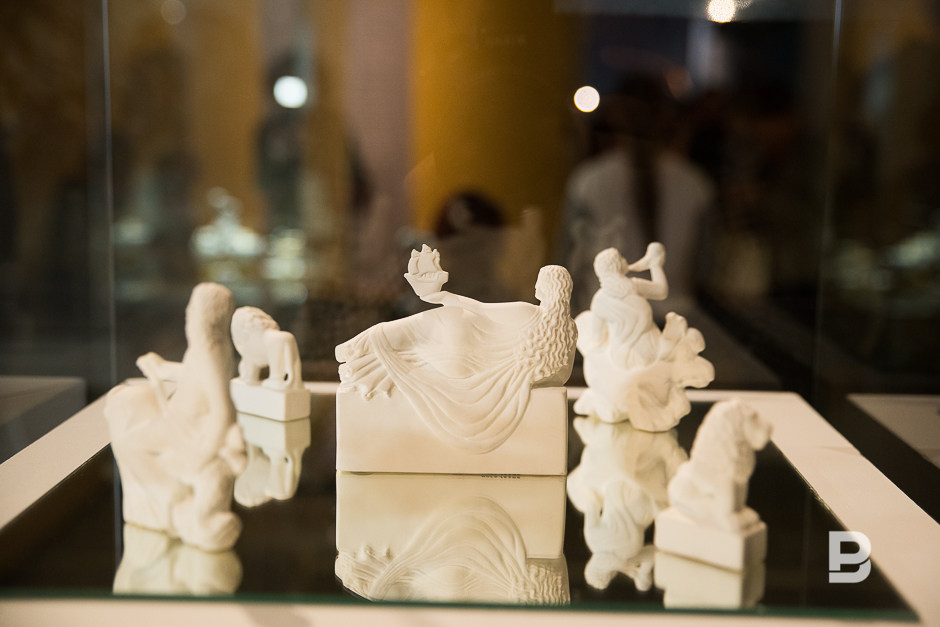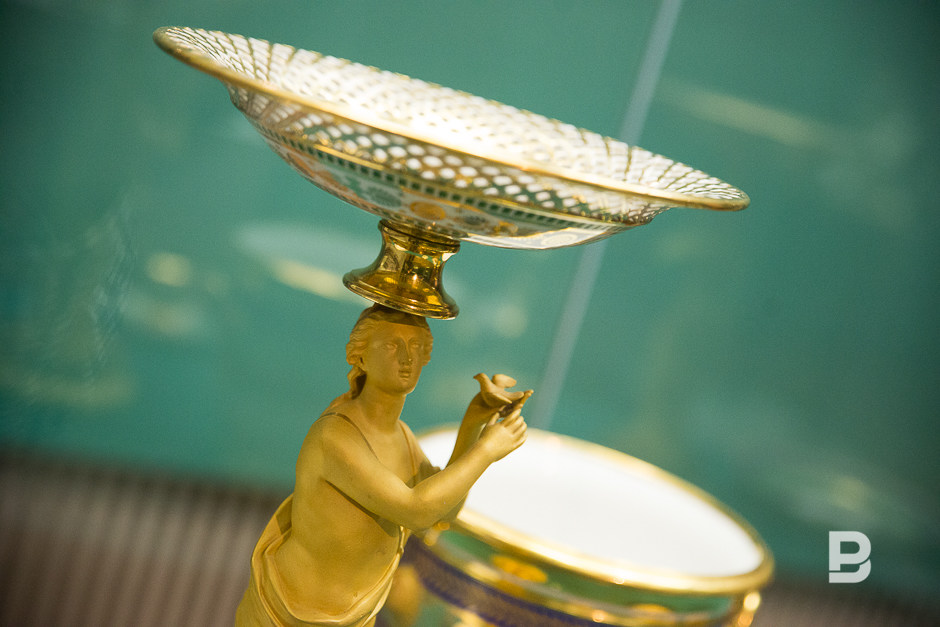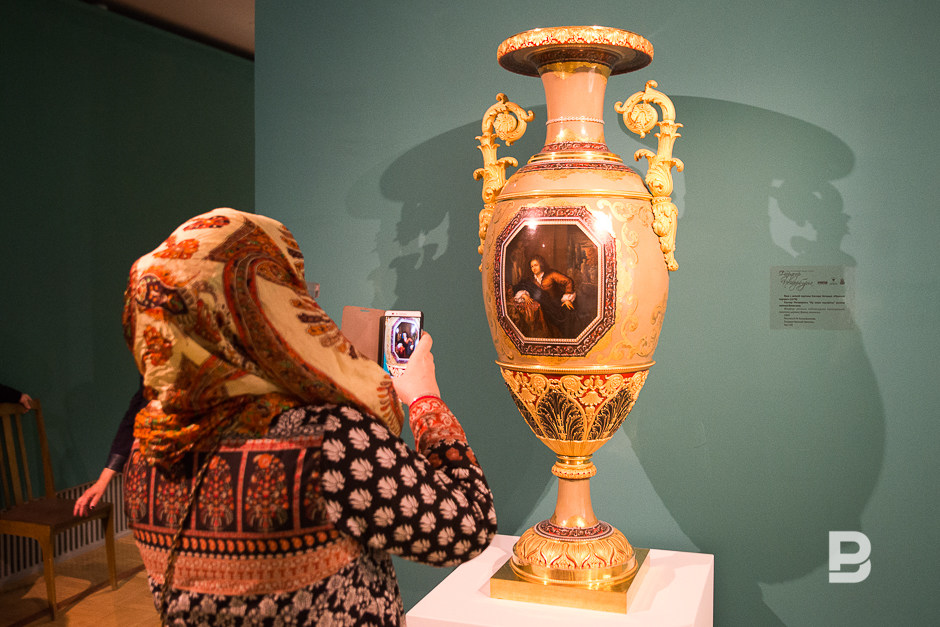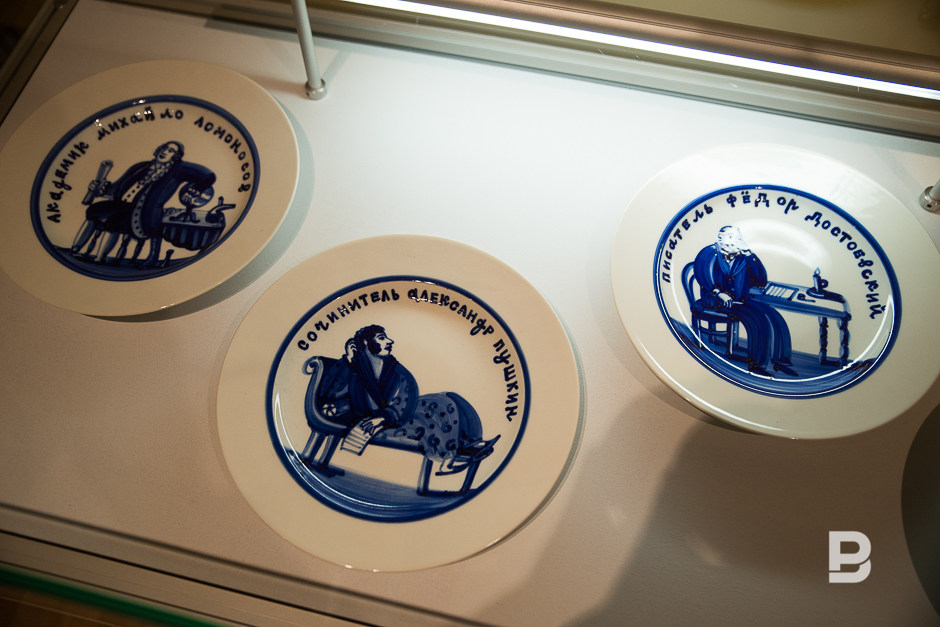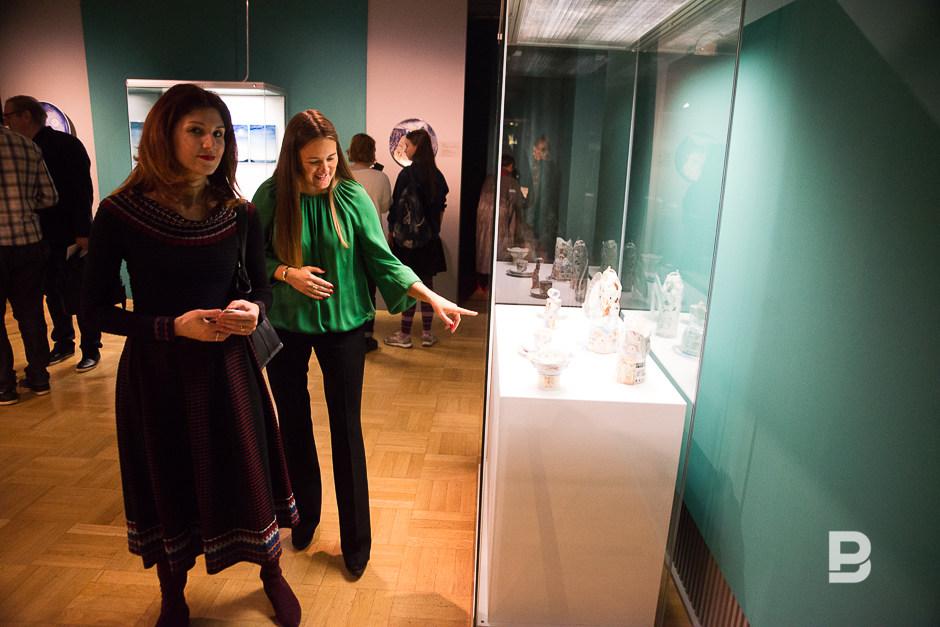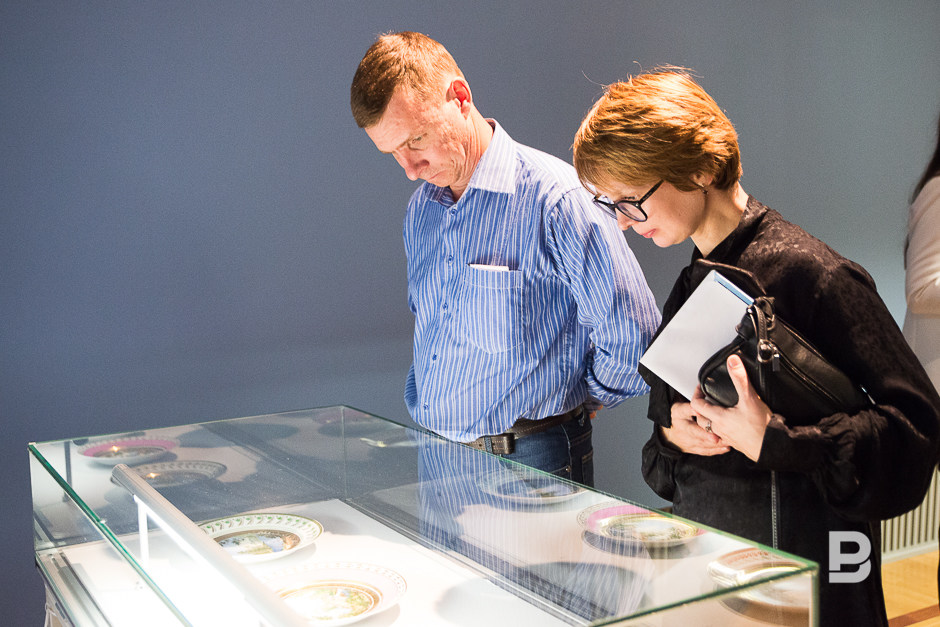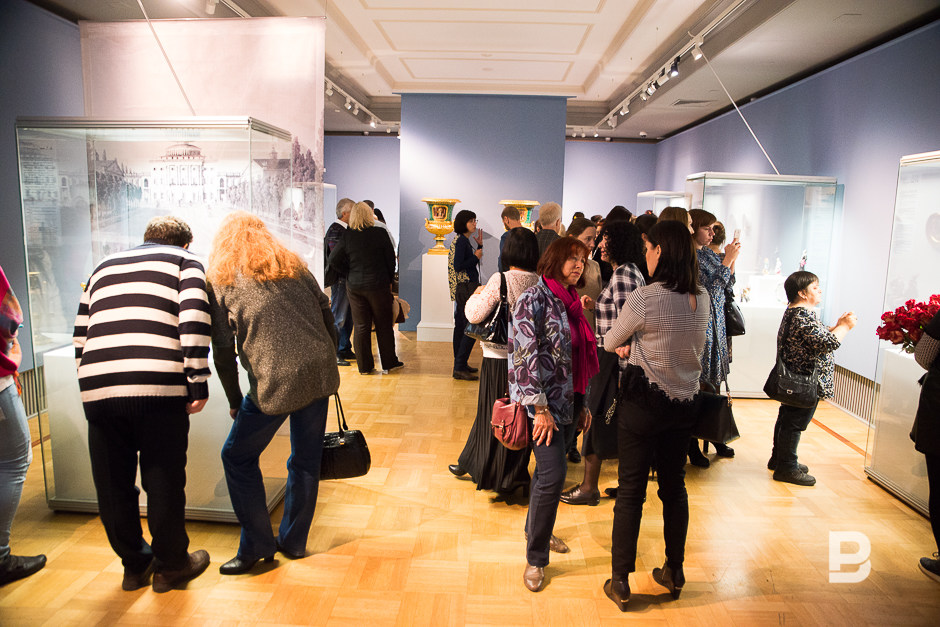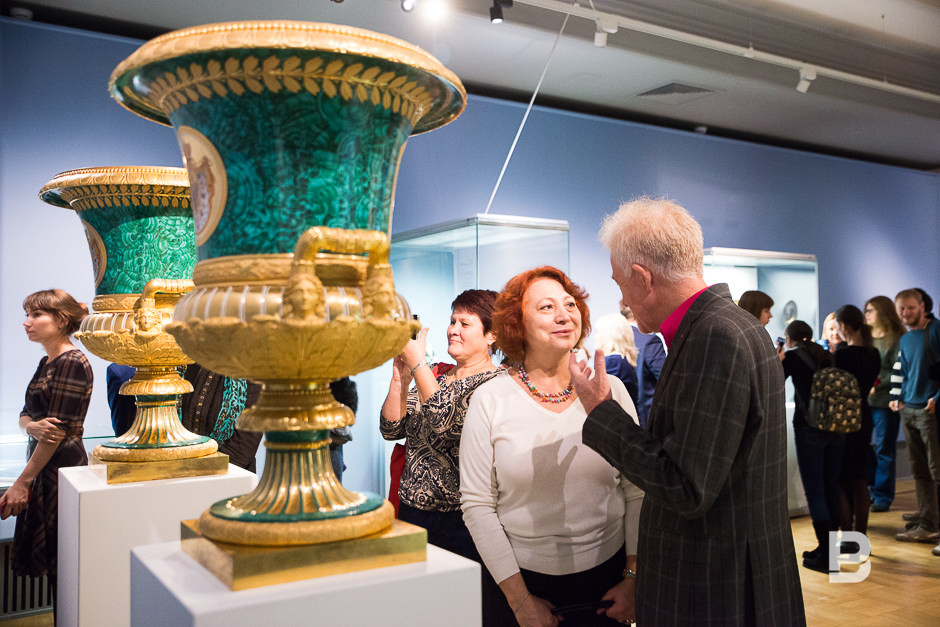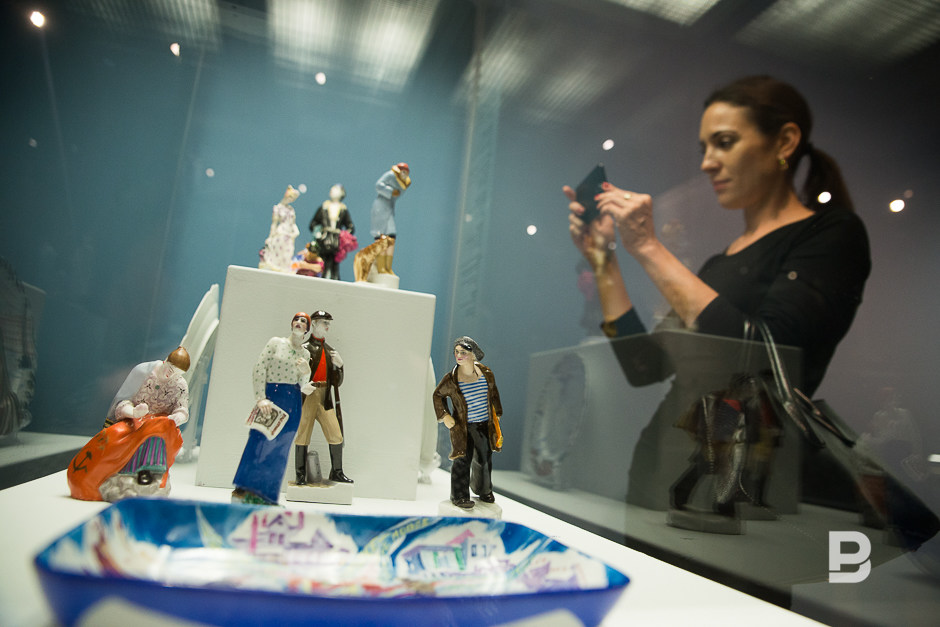Fragile beauty settles down in Hermitage-Kazan centre
'Under Transparent Ice of Glaze. Petersburg Porcelain' exhibition in the Hermitage-Kazan centre on 18 October. Over 500 unique works of masters of the 18-21st centuries are occupying all halls of the Hermitage centre. Director General of the State Hermitage Museum Mikhail Piotrovsky traditionally visited the opening of the exhibition. Realnoe Vremya tells the details.
Flying over Jupiter Hall
As it usually happens before opening Hermitage exhibitions, Mikhail Piotrovsky gave a press conference. In the beginning, director of the Kremlin complex Zilya Valeyeva noted that every new exhibition that came from State Hermitage meant new feelings and emotions. As for the porcelain exhibition, its exposition is both elegant and informative.
This time the opening of the exhibition coincided with the Hermitage Days in Kazan. On 18 October, Mikhail Piotrovsky met with scientists-historians and students and gave a lecture about the museums that were so important in a dialogue of cultures. Then there was a cycle of lectures of Hermitage workers, films about the main museum of Europe and even a possibility to go on a virtual trip to Jupiter Hall of the State Hermitage Museum.
Jupiter Hall is one of the most grandiose ones in the New Hermitage. Here one can acquaint with Roman sculpture portraits, which are considered one of the best in the world. Roman sarcophagi and Jupiter's statue after which the hall was named are also located here.

''Don't fall while flying over the hall,'' Mikhail Piotrovsky joked. The virtual trip is a joint project of the Hermitage Museum and CROC's Virtual Reality Centre.
Copies in vogue
''Porcelain was born in the East and then moved to the West and came to Russia from the West. Porcelain is a sign of European culture, the sign of Saint Petersburg. Classic samples and works of modern masters interchange on the exhibition presented in Kazan. They are presented by the State Hermitage Museum and Imperial Porcelain Factory JSC,'' Mikhail Piotrovsky told at the press conference.
He said that they managed to prevent the porcelain factory from privatisation in the 90s, which could kill the enterprise. But later smart people went to the factory officials, now the enterprise works together with the Hermitage. The museum revived a tradition: every year a new exhibition of works of the porcelain factory is held here for Christmas.
Supervisor of the exhibition Anna Ivanova told how the exhibits had been brought to Kazan. By the way, Hermitage workers and their Kazan colleagues posted almost all delivery and exhibition's preparation stages in social networks, it was very interesting to follow the work on creating the exposition.
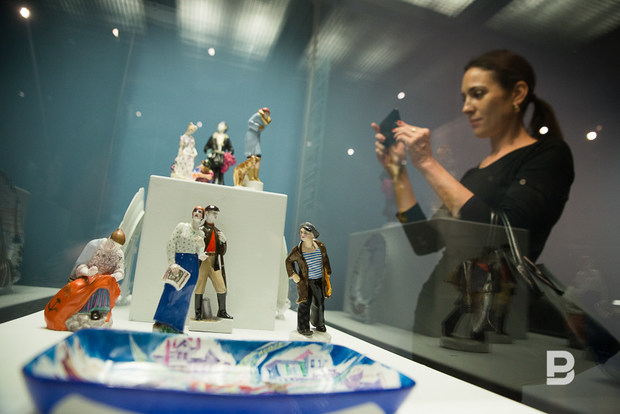
Anna Ivanova told that the items were packed for almost a week. A special company that has been cooperating with the State Hermitage Museum did it. Then the exhibits headed to Kazan with an attendant. A restorer was present here when the fragile beauty was unpacked. In answer to the question what items were ordered in the factory more often, Anna Ivanova replied that, as a rule, they were copies of porcelain works that existed in the emperor's court. They are in high demand. There is interest in the collection that was manufactured by the porcelain factory in the early 20 th century and consisted of figures of representatives of the peoples who populated the Russian Empire. One of the collectors has recently ordered a copy of this collection.
Tea with Evgeny Onegin
Opening the exhibition, Tatarstan State Adviser Mintimer Shaimiev, first of all, thanked Mikhail Piotrovsky for trusting Kazan's capacities and opening the Hermitage centre here. ''It was 12 years ago. We have opened the 17 th exhibition since then. And over a million of people have visited them,'' Mr Shaimiev reminded.
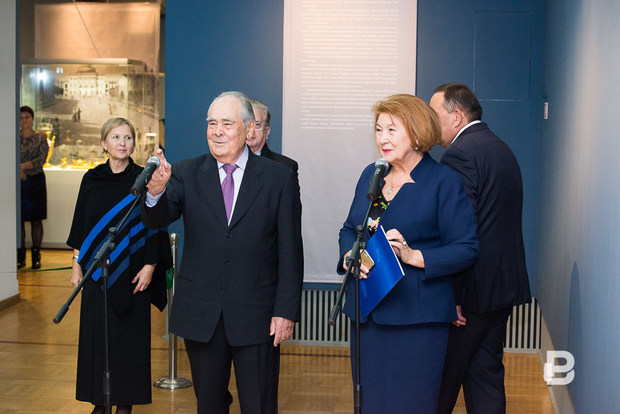
Over 500 exhibits divided into five sections are presented in the exhibition. Items from the collection of the State Hermitage Museum and works of modern masters of the Imperial Porcelain Factory combine in them. The section Porcelain Album of Petersburg demonstrates the history of the northern capital in porcelain painting, from last century's Petersburg to revolutionary Petrograd, besieged Leningrad and one of the most beautiful cities in the world today. It is curious that the first views of Petersburg appeared in porcelain items as early as the 18 th century. Porcelain painting was an element of agitation during the revolution. And the topic of the city's defenders found its place even in besieged Leningrad, in 1943. The factory continued working even during this time.
The second section is dedicated to the art in Petersburg. As far as it is known, this city inspired many creative people to create masterpieces. In this section, one can see Petersburg of Gogol, Blok, Dostoevsky, Petersburg of Russian Seasons of Sergey Dyagilev, there is even a set of plates painted with plots from Evgeny Onegin. Another division is about flora. For instance, Empress Elizabeth Feodorovna's first own tea service was painted with several types of floral ornament. If artists working in this genre used special floral atlases first, from the middle of the 19th-century masters featured live nature.
In the section dedicated to faces of fauna, one can see how the attitude of artists changed depending on their clients' tastes. And if Emperor Aleksandr II liked hunting, there was a big number of plots about this topic. Empress Maria Aleksandrovna liked pictures of animals. And collections of up to a hundred of figures of animals appeared.
And, finally, the section bearing the name 'Porcelain For All Purposes' where one can see very different works – from tea services to mirrors in porcelain frames, different styles and directions. Fragile, elegant items, each of which needs to be carefully examined for a long time.
The exhibition 'Under Transparent Ice of Glaze' is open for visitors from yesterday.



